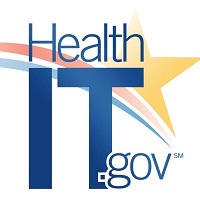 By Pablo Ardaya, Laura Urioste, and Christopher Monk, ONC
By Pablo Ardaya, Laura Urioste, and Christopher Monk, ONC
Twitter: @ONC_HealthIT
The use of certified health IT in clinical settings is complicated. We know that certification testing in the lab is different from using certified health IT in the real world, somewhat akin to the difference between “efficacy” and “effectiveness” in drug development. This is why the ONC Health IT Certification Program (Certification Program) compels participating developers to ensure that their certified health IT conforms to the full range of requirements during and after lab-based testing. When suspected issues arise with certified health IT – sometimes called “non-conformities” – the Certification Program’s conformance review process helps provide a path to resolve them.
When a non-conformity has been identified, a developer can demonstrate commitment to the quality of the technology, the user experience, and patient safety through a corrective action plan (CAP) that will highlight its efforts to notify affected end users and remedy any problems. At the time of this writing of the 993 non-conformities reported on the ONC Certified Health IT Product List (CHPL) since 2016, there were 2 certified health IT products with open non-conformities:

These open non-conformities and some associated information related to their compliance activities can be found on the CHPL’s Corrective Action Status page. This information can also be found by searching for either the certified health IT or certified health IT developer and reviewing any related “Compliance Activities.” The CHPL Public User Guide is a helpful reference to better understand how to navigate the CHPL.
Public reporting of non-conformities provides market transparency to hold developers accountable to their certification-related obligations. More than a check-the-box exercise, the Certification Program’s conformance review process is a clear oversight and enforcement framework to ensure certified health IT remains compliant with Certification Program requirements after certification testing. We describe below the complaint process and the different types of actions that follow.
ONC’s Certified Health IT Complaint Process
ONC recommends end users take three steps when it comes to concerns about certified health IT conformance. This process is outlined on our Certified Health IT Complaint Process webpage.
STEP 1 – Contact the Developer
- Customers and end users should first work with their health IT developers to resolve any issues of potential noncompliance with certification requirements
STEP 2 – Contact the ONC-ACB
- If the issue cannot be resolved at Step 1, we then recommend the customer or end user contact the ONC-Authorized Certification Body (ONC-ACB).
- You can find the ONC-ACB for a certified Health IT Module on the Certified Health IT Product List (CHPL) by searching the listing.
STEP 3 – Contact ONC
If neither preceding steps resolves the issue, customers and end users may provide feedback to ONC via the Health IT Feedback and Inquiry Portal (Feedback Portal).
Reaching out to the developer is always the best first step. The health IT developer will be able to provide the timeliest corrections and can address end user concerns or suggestions for improvements beyond the scope of certified capabilities. End users have firsthand experience with their certified health IT and are often best positioned to identify issues with it. Thus, end-user feedback and complaints are a primary source for ONC when it comes to flagging potential issues with certified health IT.
What happens if you reach Step 2, ONC-ACBs and Surveillance Activities?
If a conformance concern persists after contacting the health IT developer, we encourage you to reach out to the ONC-ACB that certified the health IT. You can find out which ONC-ACB certified the health IT on the ONC’s Certified Health IT Product List (CHPL). Once contacted, the ONC-ACB will conduct a thorough review of the complaint(s), work with developers and end users to understand the nature of the complaint, and determine if it relates to the scope of the capabilities to which the health IT was certified. If the complaint is about concerns related to a certified capability, the ONC-ACB will initiate surveillance, which kicks off a process to review the certified health IT’s conformance to specific regulatory requirements. End users should plan to provide the ONC-ACB with supporting information so they can fully assess the issue(s) and work with the developer to remediate the identified certification issues for all impacted end users.
What happens if you reach Step 3, ONC and Direct Review Activities?
The final step in the certified health IT complaint process is to contact ONC via the Health IT Feedback and Inquiry Portal (Feedback Portal). End users seeking to report problems with their certified health IT should select the option under the “Complaints” section for “Certified Health IT,” and then fill in the form with the requested information providing as much detail and documentation as possible so ONC can best identify the certified health IT and coordinate with the applicable ONC-ACB as necessary. ONC and the ONC-ACBs have reviewed and acted on 383 complaints received since 2017 regarding certified health IT products, ensuring compliance with the Certification Program.
Some certification requirements are beyond an ONC-ACB’s scope and ability to enforce, including those related to compliance with the new Conditions and Maintenance of Certification required by the 21st Century Cures Act. Where a potential non-conformity is outside an ONC-ACB’s scope or ability, ONC may choose to directly engage in oversight action related to certified health IT and developers of certified health IT to ensure conformity to Certification Program requirements. End users can find more information about Direct Review at the following resources.
How can you help us improve this process?
We always welcome end user feedback through the Feedback Portal. Your continued engagement helps improve certified health IT as well as the overall operation of the ONC Health IT Certification Program.
This article was originally published on the Health IT Buzz and is syndicated here with permission.
